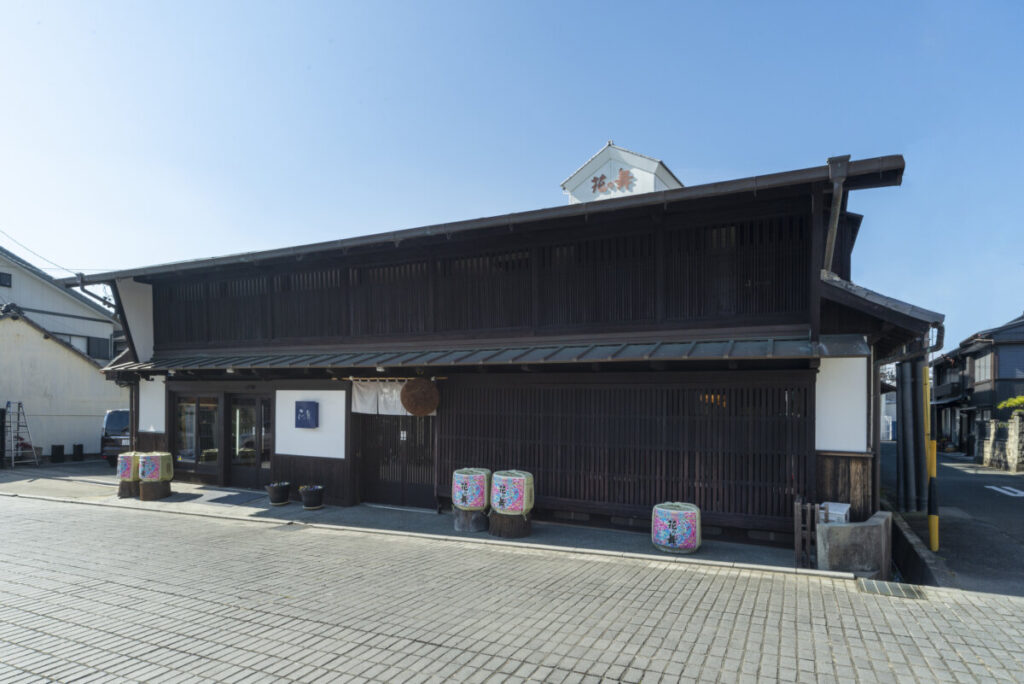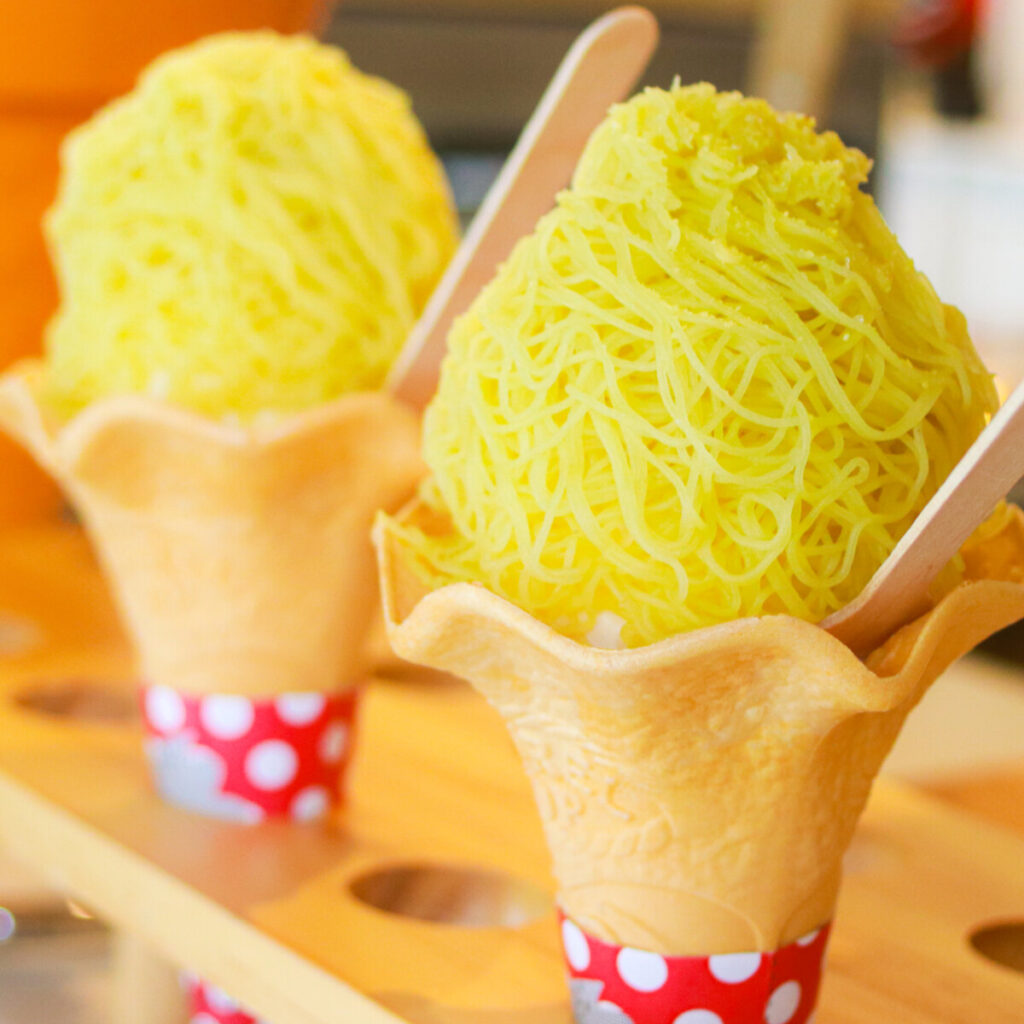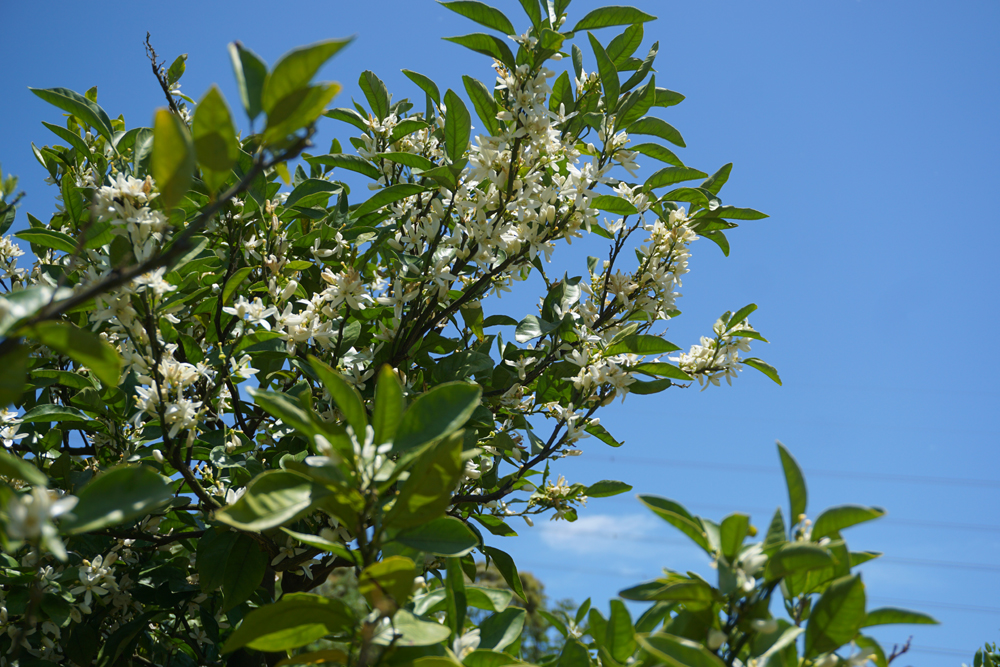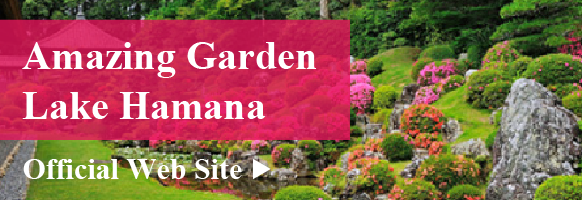Get to Know Hamamatsu
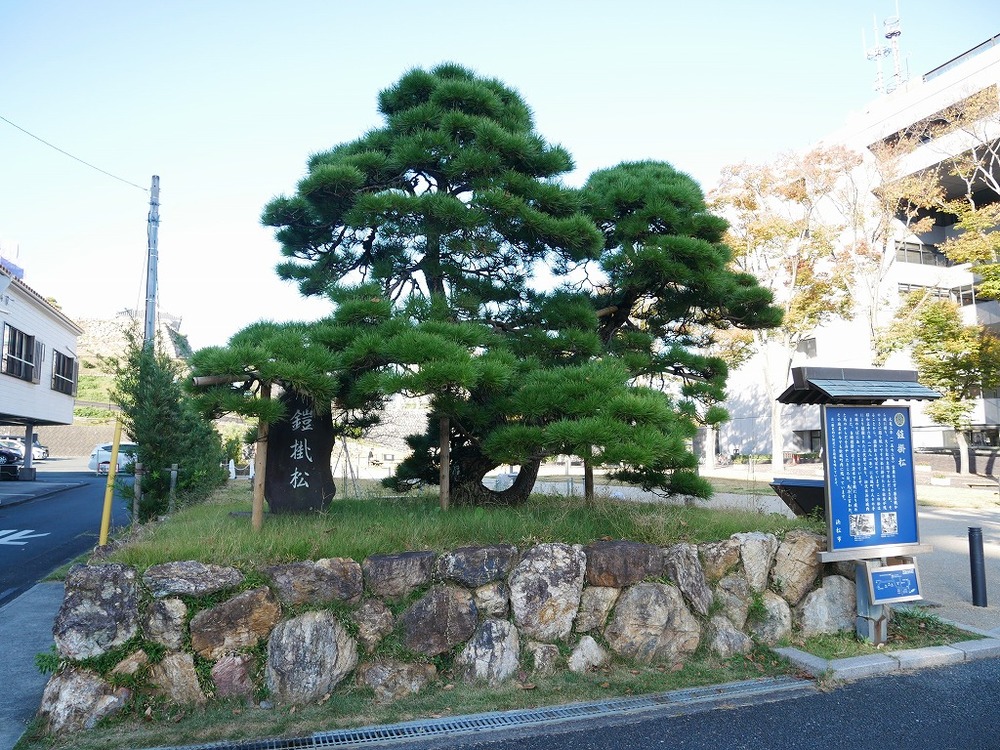
- Enjoy
- Watch
Walking in the Footsteps of Ieyasu: Exploring Historic Sites Around Hamamatsu Castle(Part 2)
Hamamatsu is where Tokugawa Ieyasu spent 17 years. Around Hamamatsu Castle are many historic spots linked to him. With the “Ieyasu’s Walking Trail” leaflet, we explore these sites…
Tokugawa Ieyasu, one of the Three Great Heroes, spent 17 of his 75 years in the prime of his youth in Hamamatsu. As a result, there are still places around Hamamatsu Castle that are connected to Lord Ieyasu.
The “Castle Inner/Castle Route” of “Ieyasu’s Promenade” is a route that connects 12 of them so that you can visit them with a single stroke. This time we will be showing you the south side of this route from Hamamatsu Castle. Don’t forget to take the leaflet before leaving!
Go south on Ote Street!
Last time we visited Totomibunki Inari Shrine and returned to Hamamatsu Castle, so this time we started from the next point, Matsuo Shrine.
I’d like to say that, but there are spots related to Hamamatsu Castle between Hamamatsu Castle and Matsuo Shrine, so let’s go there first.
By the way, according to the leaflet, the estimated travel time from point 7, Matsuo Shrine, to point 12, Ieyasuko Yoroikakematsu, is approximately 35 minutes.
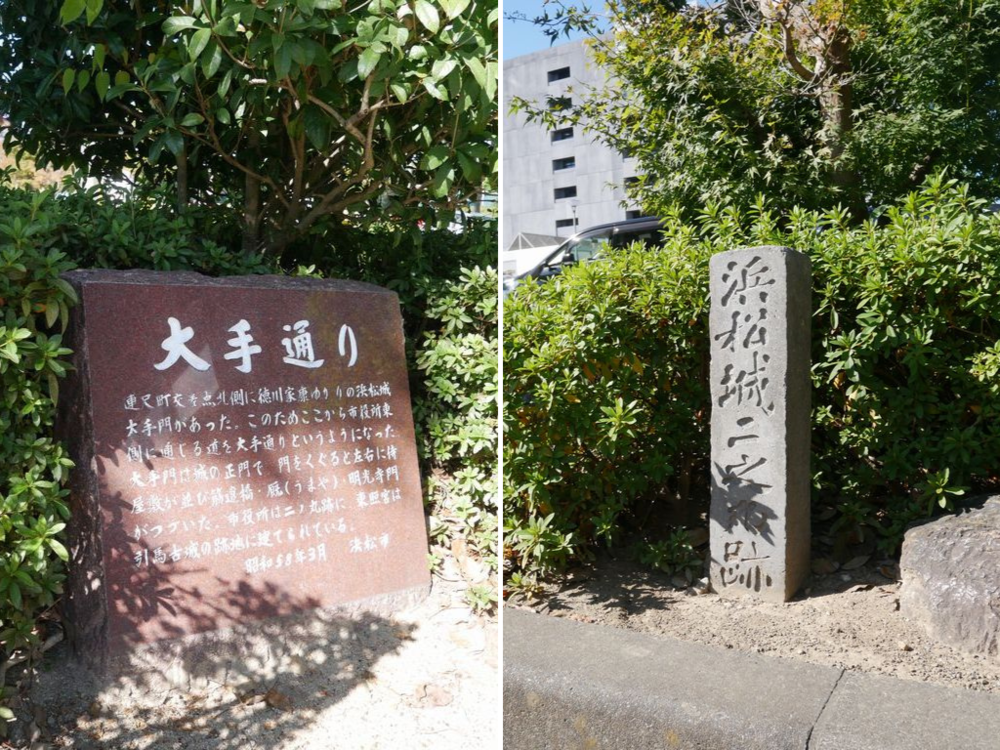
The first stop is a stone monument on Ote Street next to the parking lot of Hamamatsu City Hall, a spot not listed on the map in the leaflet.
It came to be called that because the entrance to Hamamatsu Castle, the Otemon Gate, was located a little south of here.
The stone monument “Hamamatsu Castle Ninomaru Ruins” is right next to it. This area was the Ninomaru of Hamamatsu Castle, and included the palace where the castle lord lived.
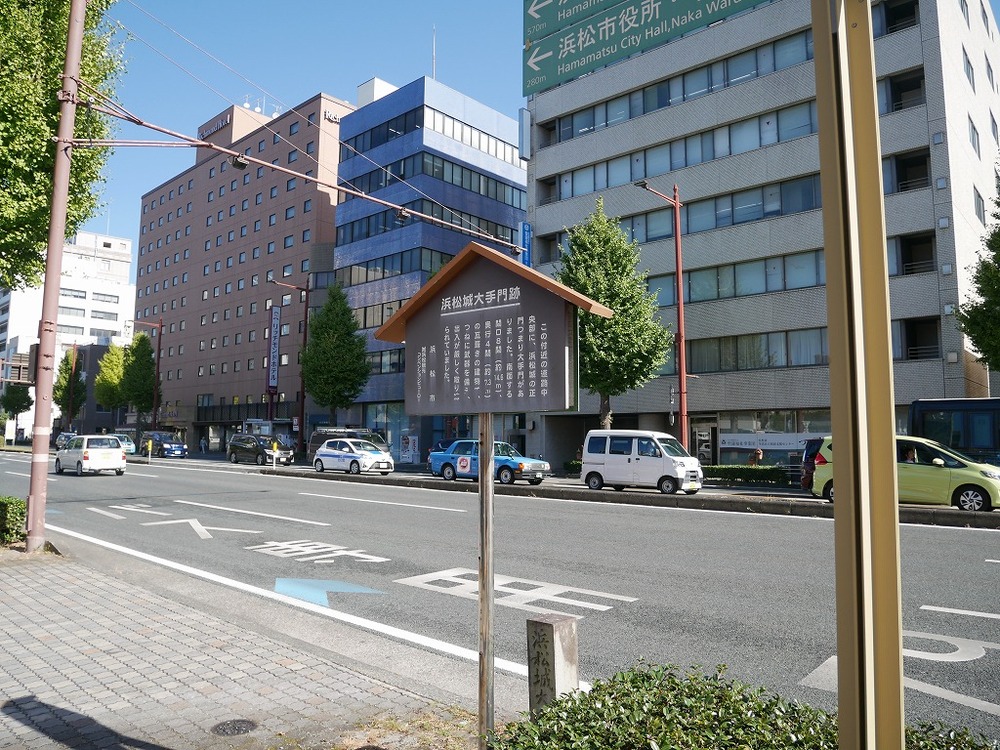
The next two are Hamamatsu Castle-related spots listed on the map in the leaflet.
The photo above is a sign pointing to Otemon site, which stands next to the Renjaku intersection heading south from Hamamatsu City Hall. Otemon, the main gate of Hamamatsu Castle, was located around here. There is also a stone monument at the foot of the signboard.
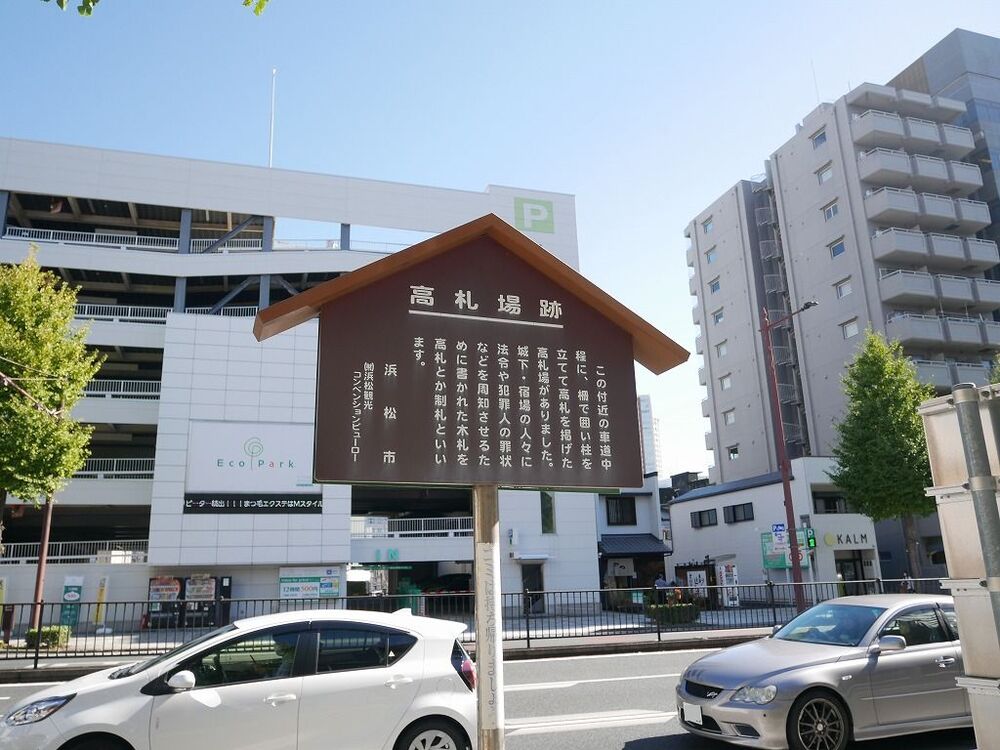
If you go south about 70 meters from the Renjaku intersection, you will see a sign indicating the ruins of the takafuda bank.
Kosatsuba is a place where wooden tags written by the shogunate were put up to notify the common people of laws and regulations. The wooden tag was shaped like this signboard and was hung in a place where people could see it.
7th point・Matsuo Shrine
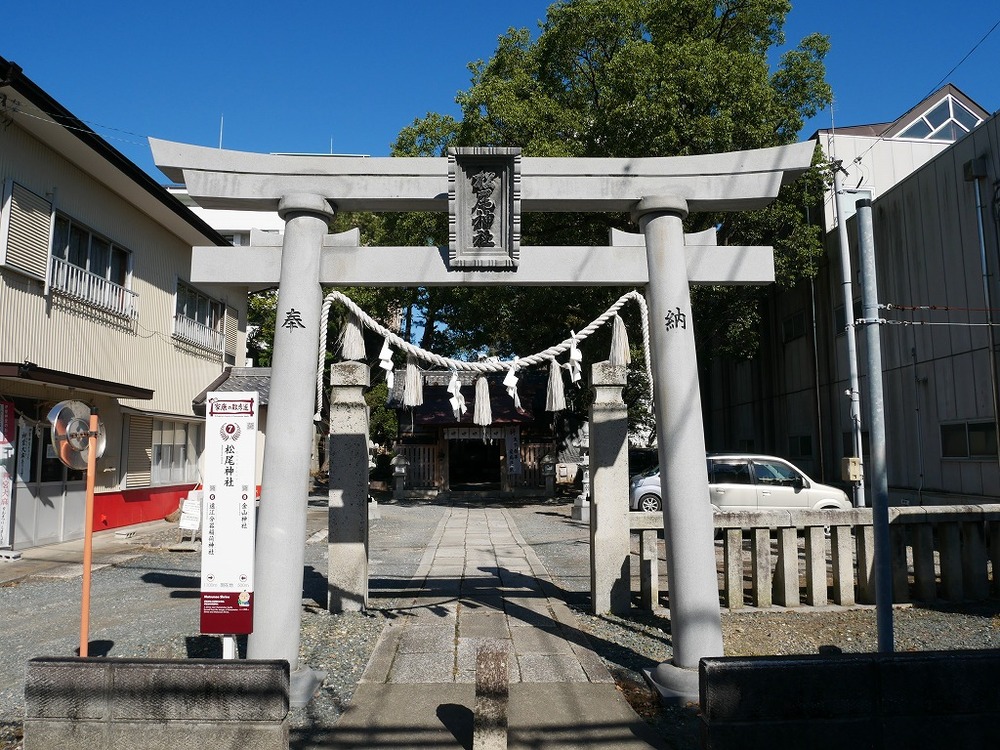
It is about 600 meters from the Kosatsuba site to Matsuo Shrine, about 7 minutes on foot. Turn right at the next intersection after the Tenmacho intersection, walk a little further, and it will be on your right.
It is said to have been founded in the Wado era (708-715), and was said to have been enshrined in Hikuma Castle as Hamamatsu Shrine until 1577 (Tensho 5), when Lord Ieyasu expanded and repaired Hamamatsu Castle.
It is said that this expansion led to the shrine being enshrined with Matsuo Shrine, the guardian deity of Hamamatsu Castle, and moved to this location.
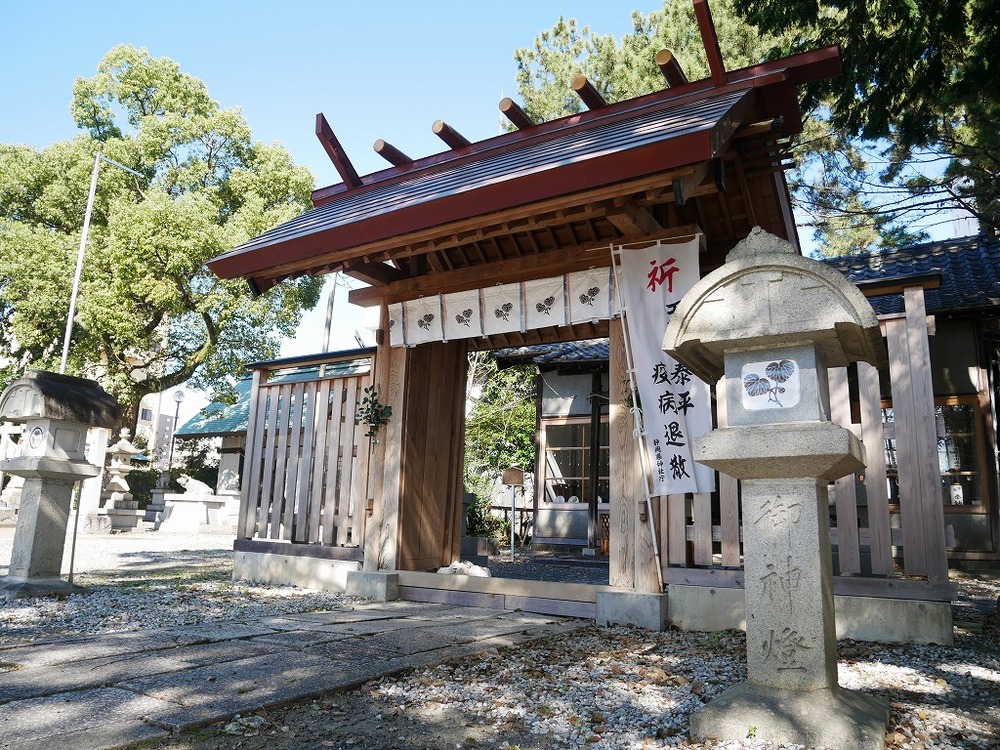
It used to be a place of prayer for Hamamatsu Castle, and was highly revered by successive lords of the castle, and had a deep relationship with the Hamamatsu clan. If you have time, you can also visit Tenmangu Shrine and Inari Shrine.
8th point: Kanayama Kanayama Shrine
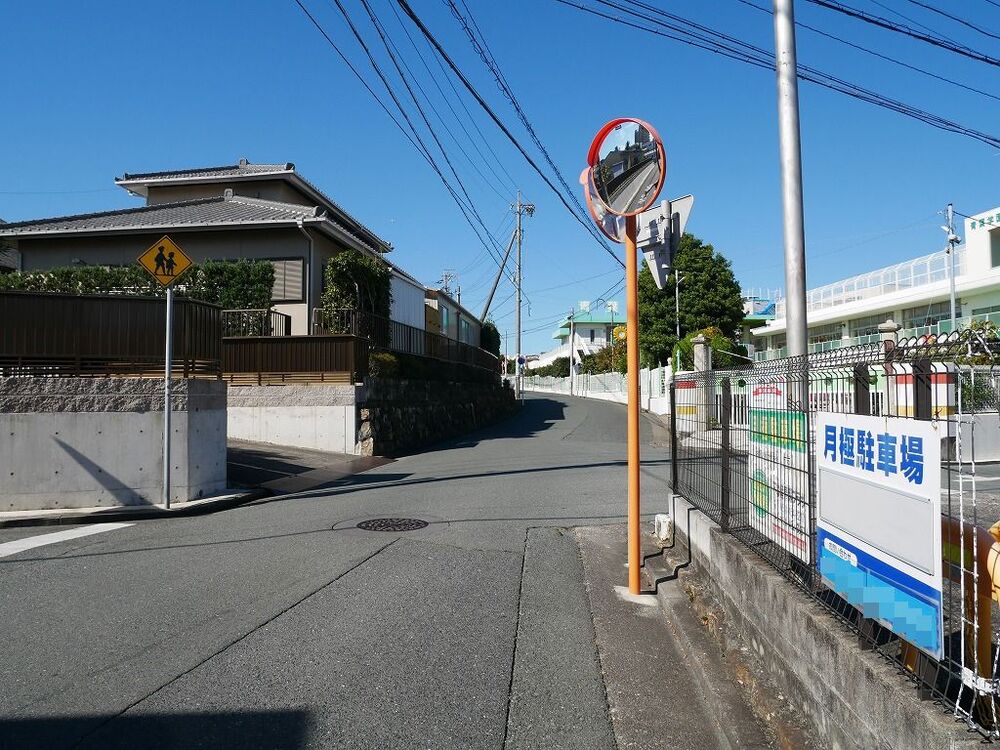
From Matsuo Shrine to Kanayama Shrine is about 500 meters northwest, about 7 minutes on foot. Make one right and left turn along the way.
The right turn point is at the intersection without a traffic light, which is located west of the road in front of Matsuo Shrine, or at the next modified intersection (photo above). The map in the leaflet for “Ieyasu’s Promenade” says to turn right at the three-way intersection, so be careful.
The author turned right at the modified intersection. The landmark of this place is the kindergarten.
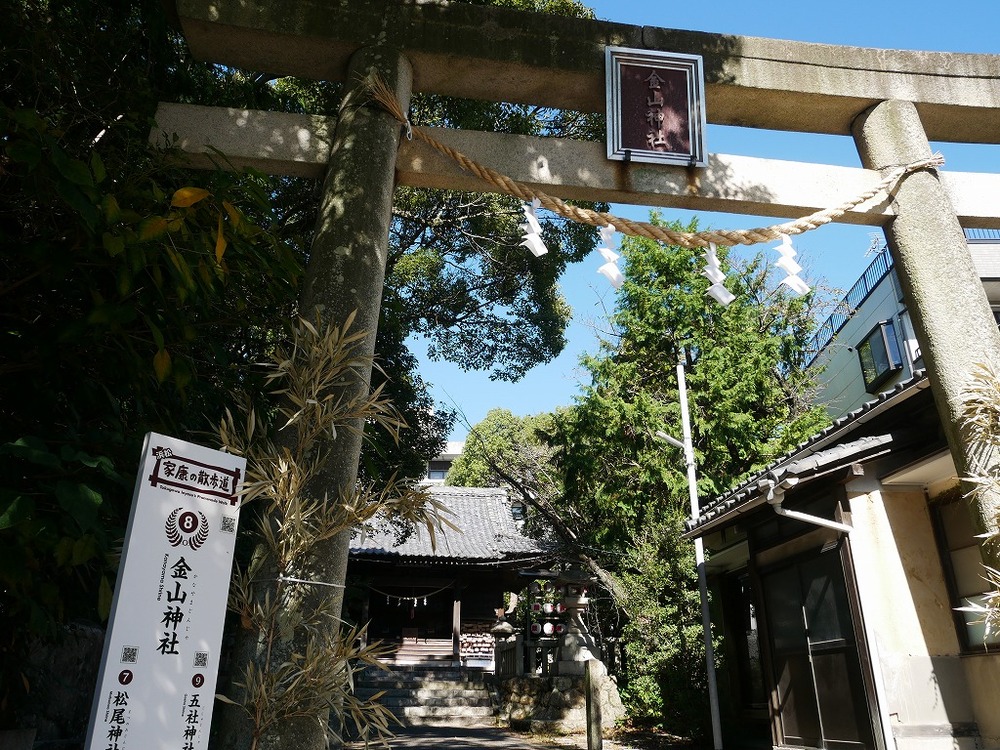
The deities enshrined at Kanayama Shrine are Kanayamahiko no Mikoto and Kanayama Hime no Mikoto, the gods of mining and metals.
Because of its name, Kanayama, it is believed to bring good luck with money, and because it is the god of marriage, it is said to be beneficial for fulfilling love lives and praying for good relationships.
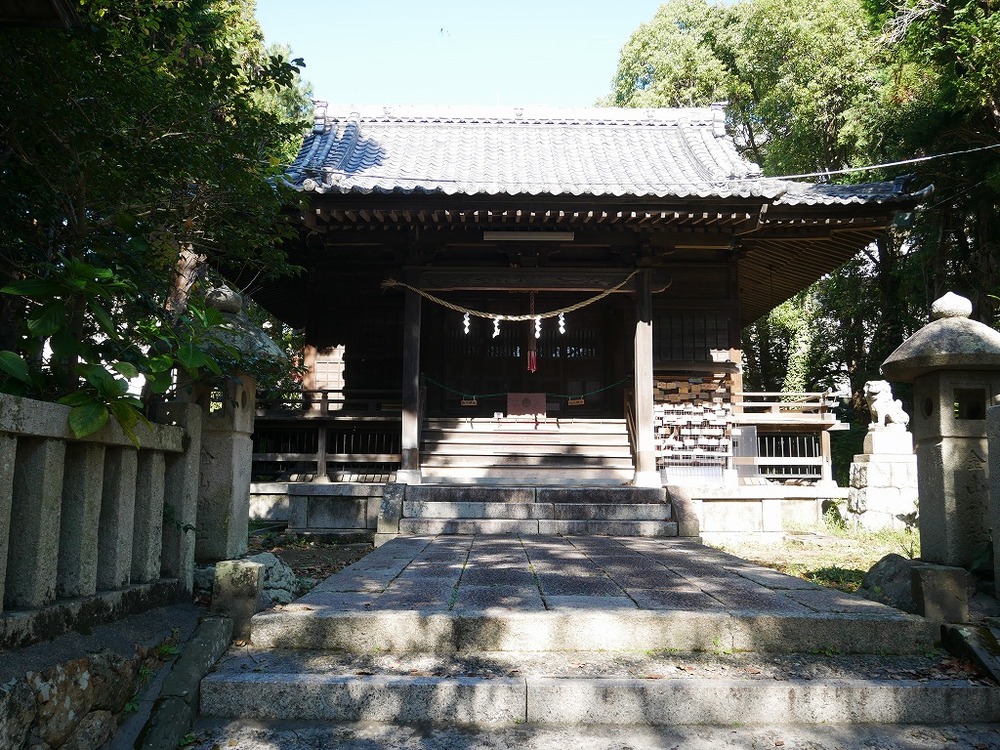
It was originally enshrined in the Sannomaru area of Hamamatsu Castle, but it is said to have been moved to its current location during the Kannei era (1624-1644) as the castle town was formed.
The Otemon gate mentioned above was located at the southern end of Sannomaru.
9th point/Gosha Shrine/Suwa Shrine
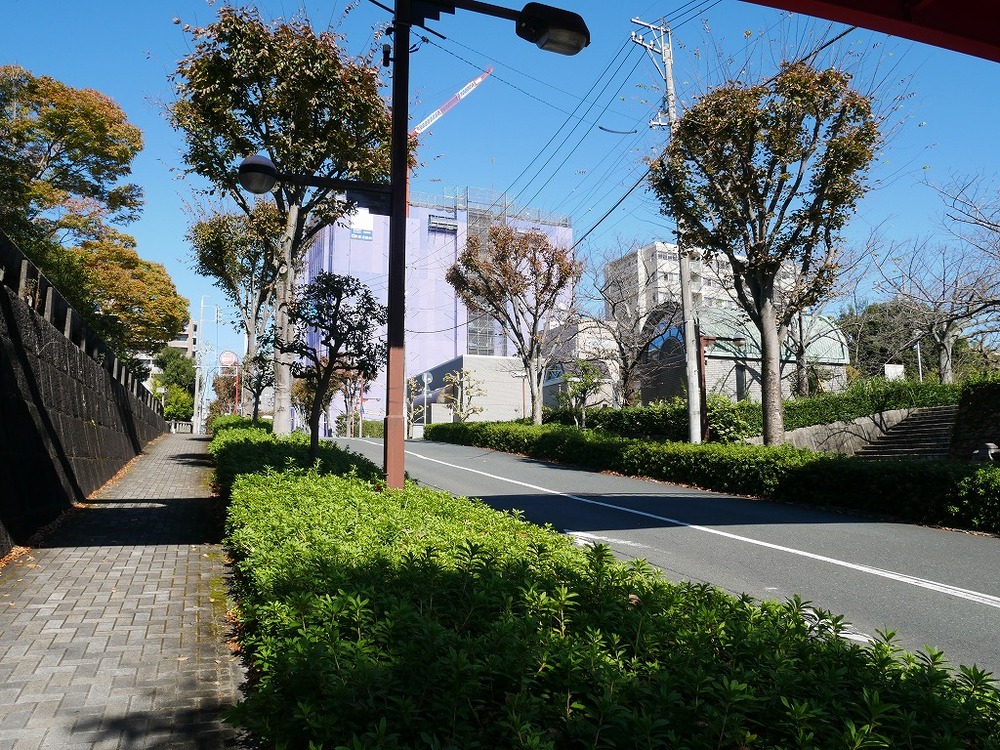
It is about 300 meters from Kanayama Shrine to Gosha Shrine and Suwa Shrine, about 4 minutes on foot. Return to the Sakaemachi intersection, turn left, and go up the gentle slope until you see a vermilion torii gate on your left.
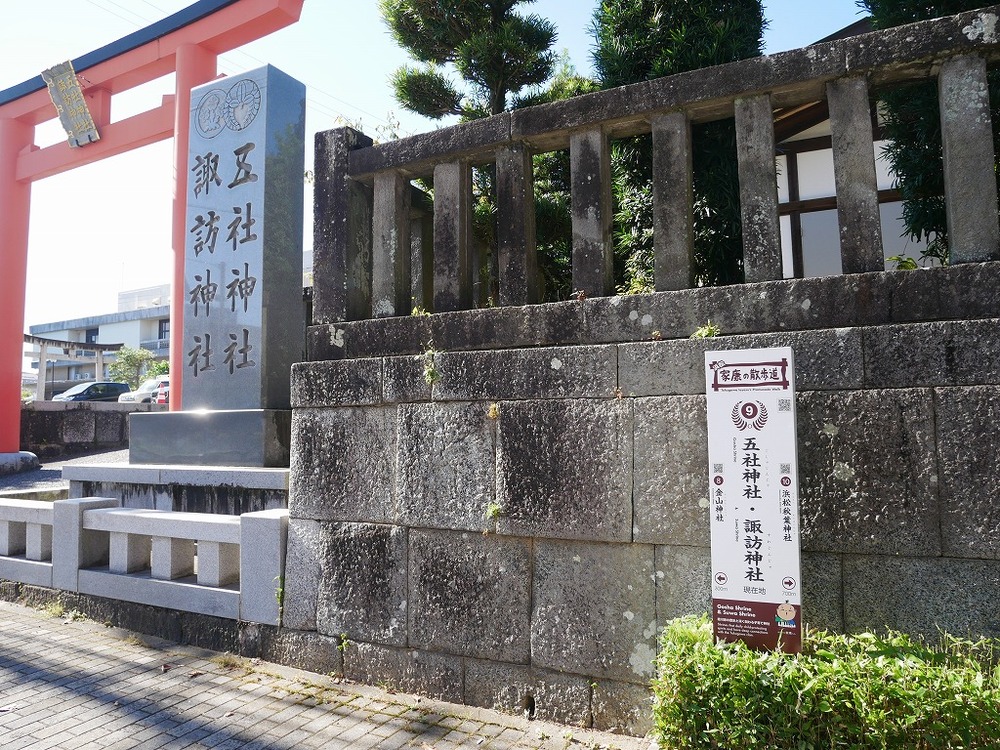
The foundations and deities enshrined at Gosha Shrine and Suwa Shrine are different.
This is because both shrines were worshiped as local deities at the time of Hidetada’s birth, but they were originally enshrined in different locations.
Gosha Shrine was located in the Ninomaru area of Hamamatsu Castle, Suwa Shrine was located in front of Otemae in Hikuma Castle, and before that, it was located in Ropponmatsu in Nakajima 1-chome.
Gosha Shrine was moved to its current location in 1580 (Tensho 8), and Suwa Shrine was moved to its current location in 1634 (Kanei 11). The two shrines used to stand side by side, but in the 1960s they were enshrined together and became one shrine.
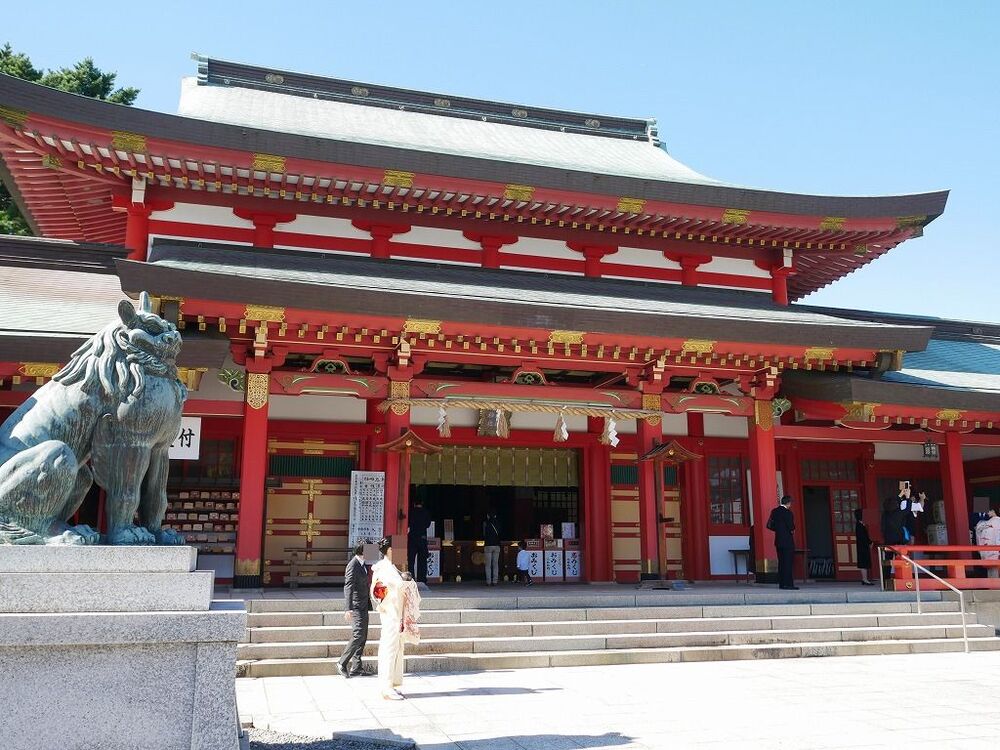
The grounds are large and have plenty of sunlight. On the day I visited the shrine, I could see people visiting the shrine everywhere. Of course, there were also the worshipers.
10th point: Hamamatsu Akiba Shrine
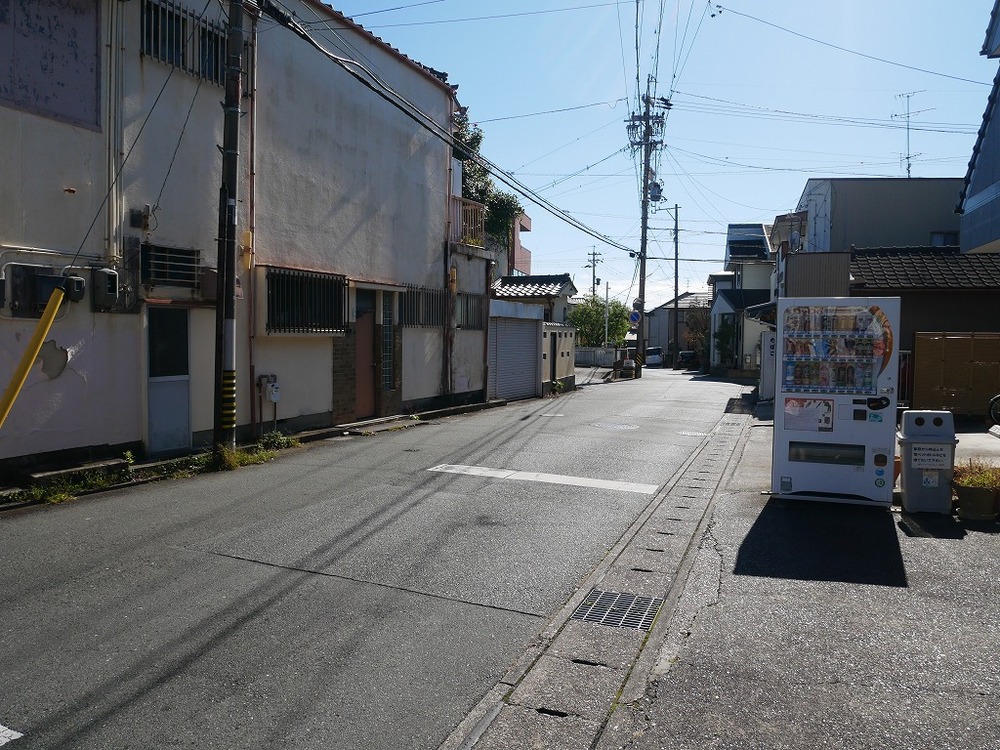
From Gosha Shrine/Suwa Shrine to Hamamatsu Akiba Shrine is about 700 meters northwest, about 11 minutes on foot. Turn left at the Kouyamachi and Takamachi intersections, then turn right at the three-way intersection after the Takamachi intersection.
This is the longest section of the second half of “Ieyasu’s Promenade.”
The photo above is the view south from Takamachi intersection. The landmark of the three-way intersection is a curved mirror attached to a utility pole on the left side of the road. Turn right here and go straight, and the torii gate of Hamamatsu Akiba Shrine will be right in front of you.
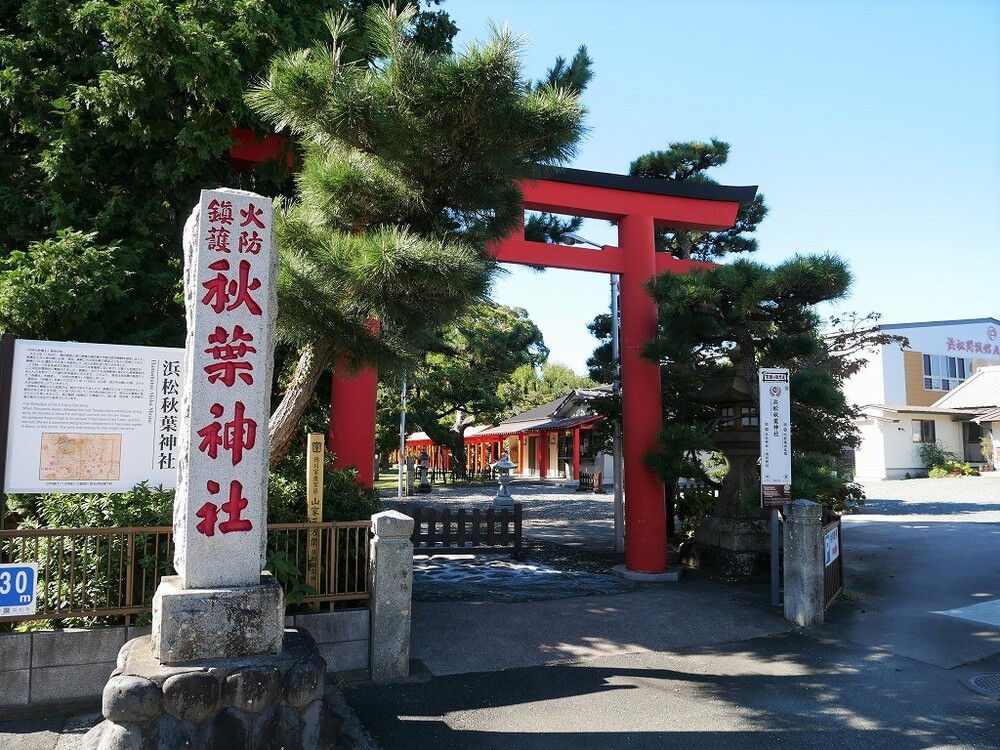
Hamamatsu Akiba Shrine was founded in 1570 (Eiroku 13) when Lord Ieyasu entered Hamamatsu Castle.
It is said that the shrine was sent to this area, which is the Urakimon (southwest) of Hamamatsu Castle, from the sacred mountain Akihabara in the far north by order of Lord Ieyasu.
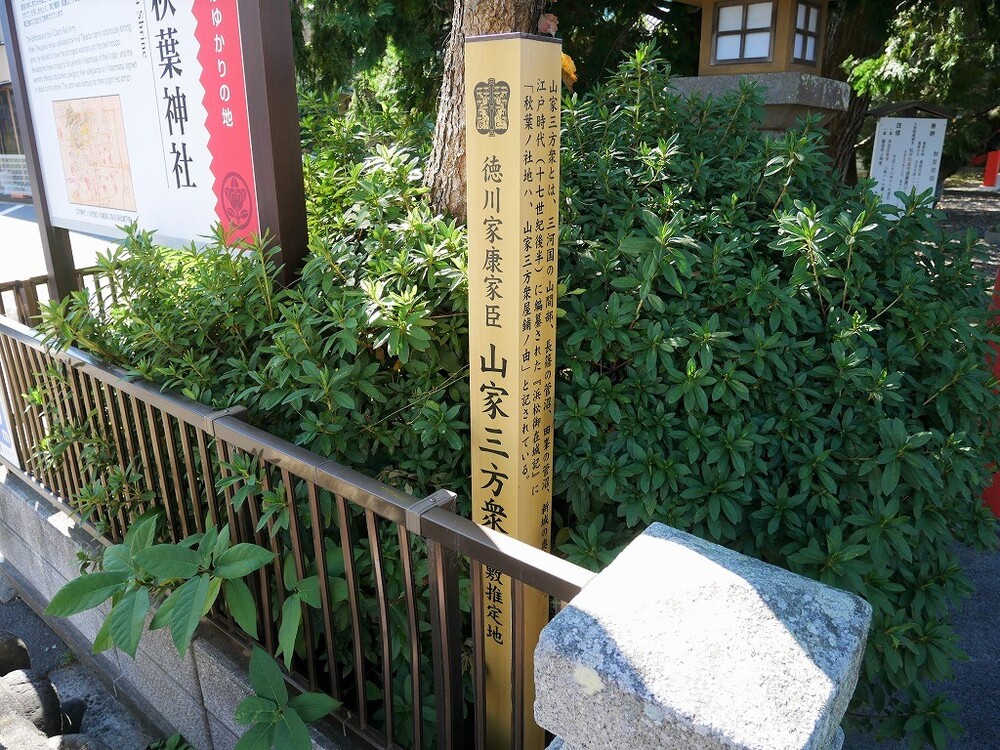
The precincts of the shrine are thought to be the remains of the residence of Yamaga Sampo-shu, a vassal of Lord Ieyasu, and a monument is erected under the torii gate to mark this fact.
The Yamaga Sanpo-shu are the Okudaira clan of Shinshiro, the Suganuma clan of Nagashino, and the Suganuma clan of Damine, all of whom were influential nationalists in Oku-Mikawa. Among them, Nobumasa Okudaira of Tsukude Castle was highly trusted by Lord Ieyasu, and he took Kamehime, the eldest daughter of Lord Ieyasu, as his legal wife.
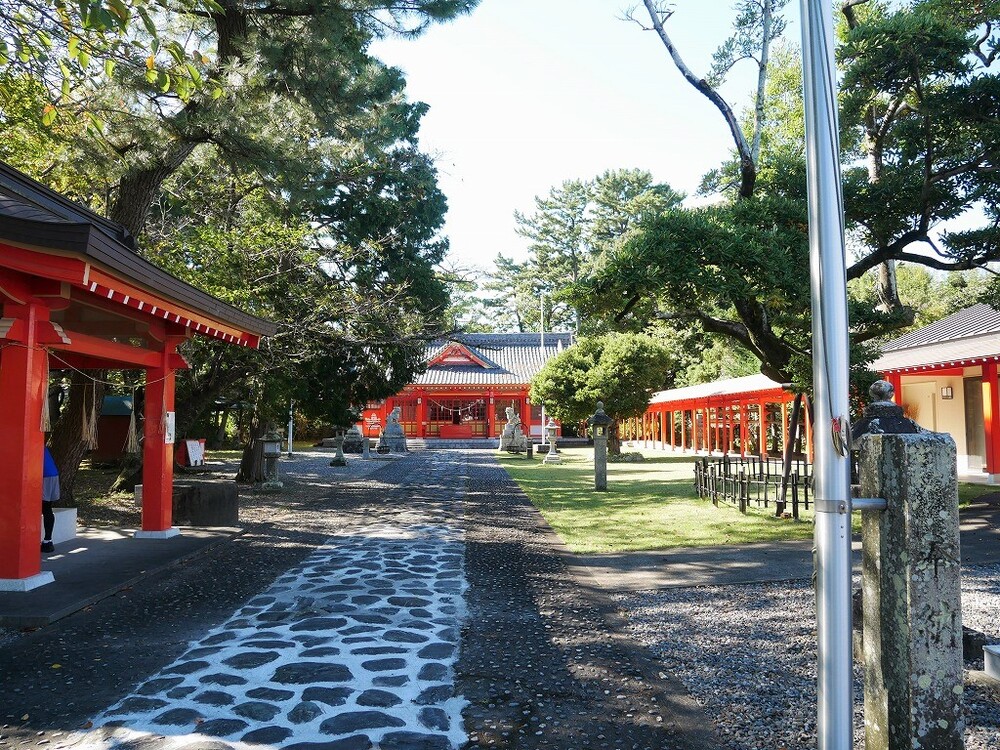
The precincts of Hamamatsu Akiba Shrine have a calm atmosphere. The vermilion-painted corridor that extends from the vicinity of the shrine office to the worship hall gives the shrine an even more serene atmosphere. Even on rainy days, you can visit the shrine without getting wet.
The corridor has a gentle slope, so if you find it difficult to walk on the uneven approach path, why not try using this route?
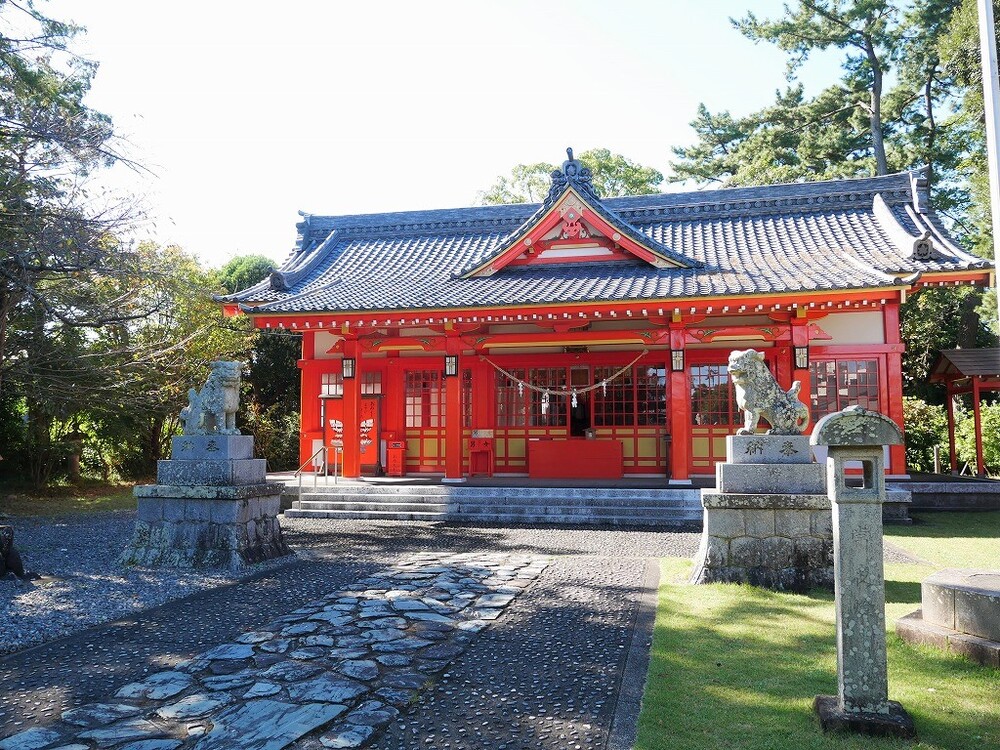
This Hamamatsu Akiba Shrine is the place where the former Takeda vassals dedicated their petitions, linking the Tokugawa, Takeda, and Ii families. For this reason, it is said to be the birthplace of “Ii no Akamori”.
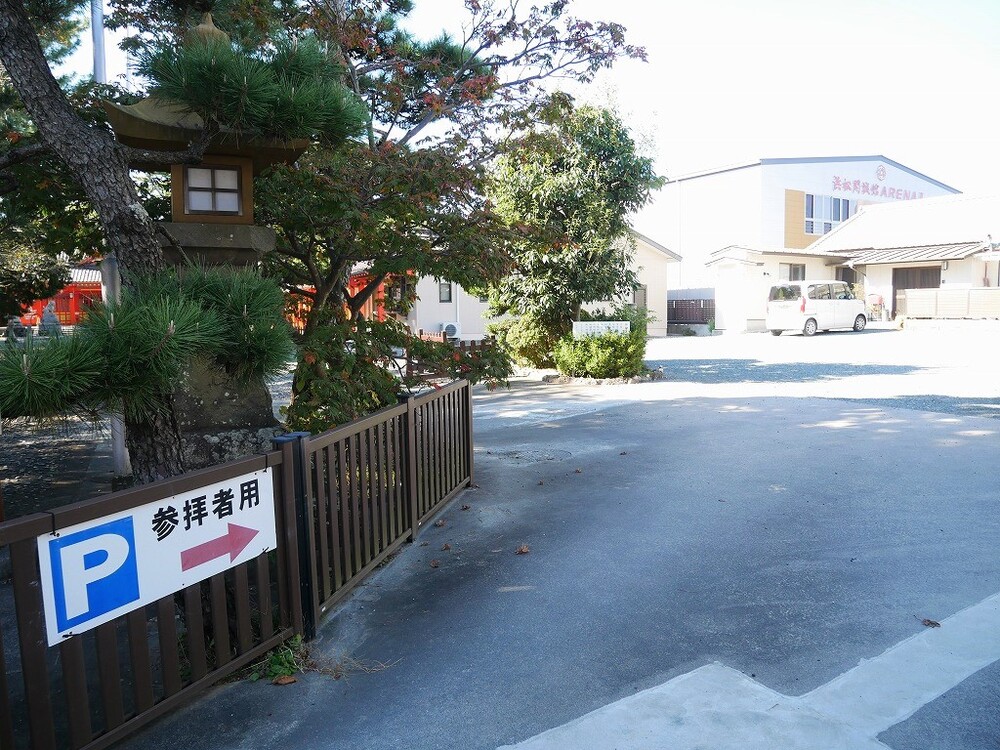
In the parking lot for worshipers, there is also a monument marking the site of the residence of Nobumasa Okudaira, one of the Yamaga Sampo-shu. The monument stands in the center of the photo above, where there are trees.
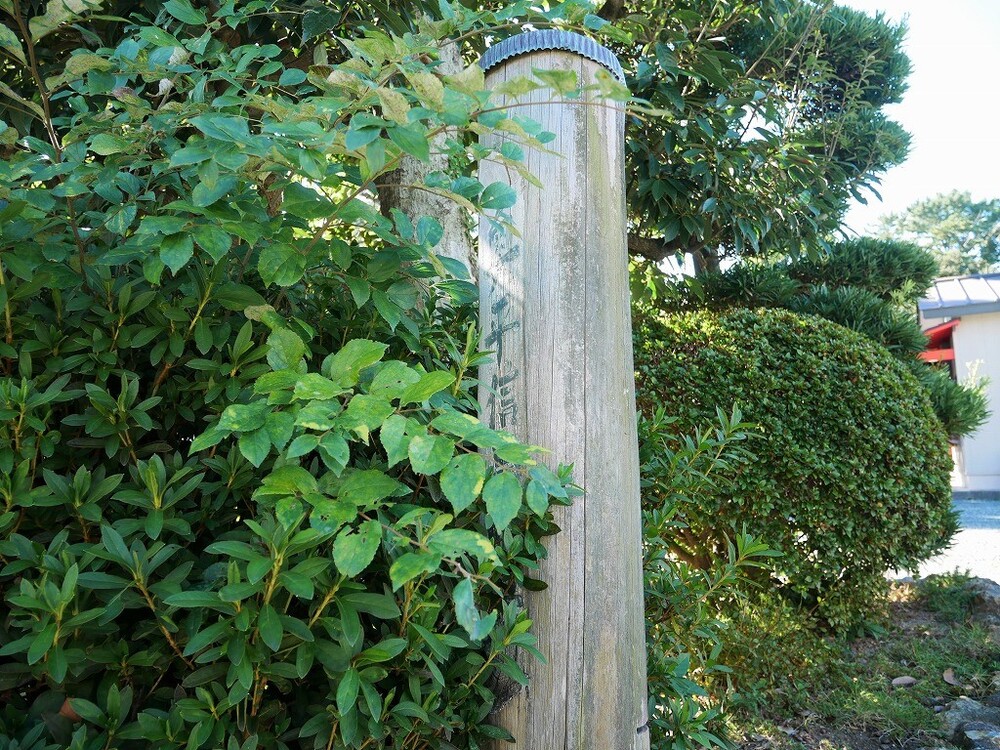
Point 11: Hamamatsu Castle Demaru Ruins
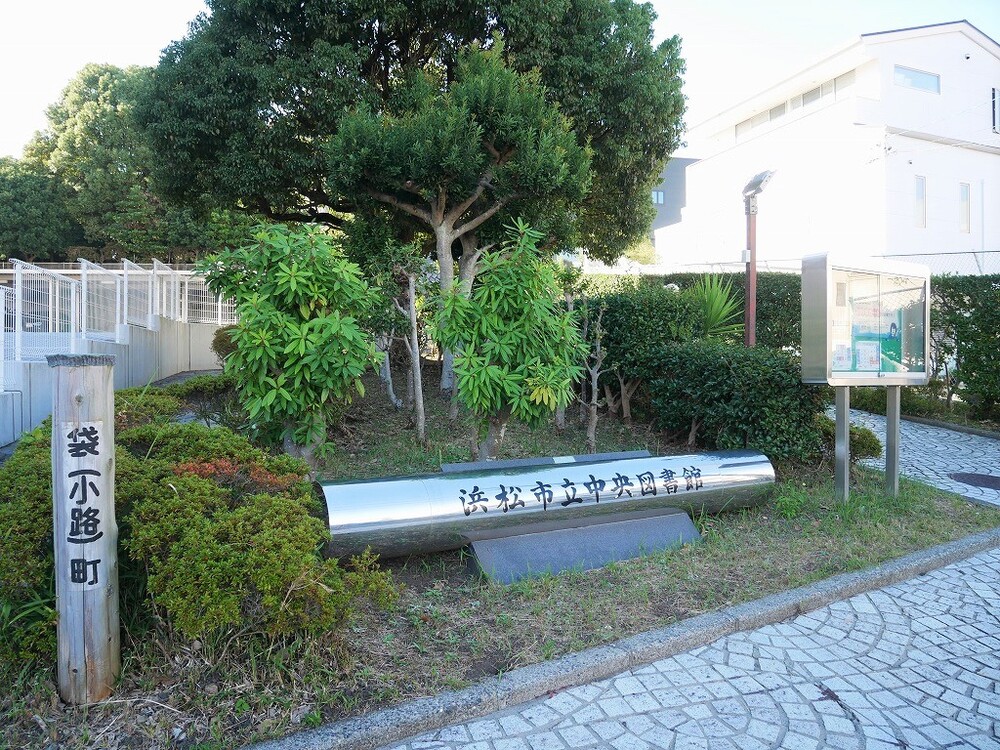
It is about 650 meters from Hamamatsu Akiba Shrine to Hamamatsu Castle Demaru ruins, about a 10 minute walk. Return to the Kouyamachi intersection and turn left, heading towards Hamamatsu City Central Library.
As I felt when I walked along the east side of Hamamatsu Castle in the first part of “Ieyasu’s Promenade”, the town of Hamamatsu has a surprisingly large number of hills. This is because Hamamatsu Castle was built at the tip of the Mikatahara Plateau, and the castle town was mainly formed from the south to east sides of the castle.
The area around Hamamatsu Akiba Shrine is 30 meters above sea level, but this area is only about 20 meters above sea level.
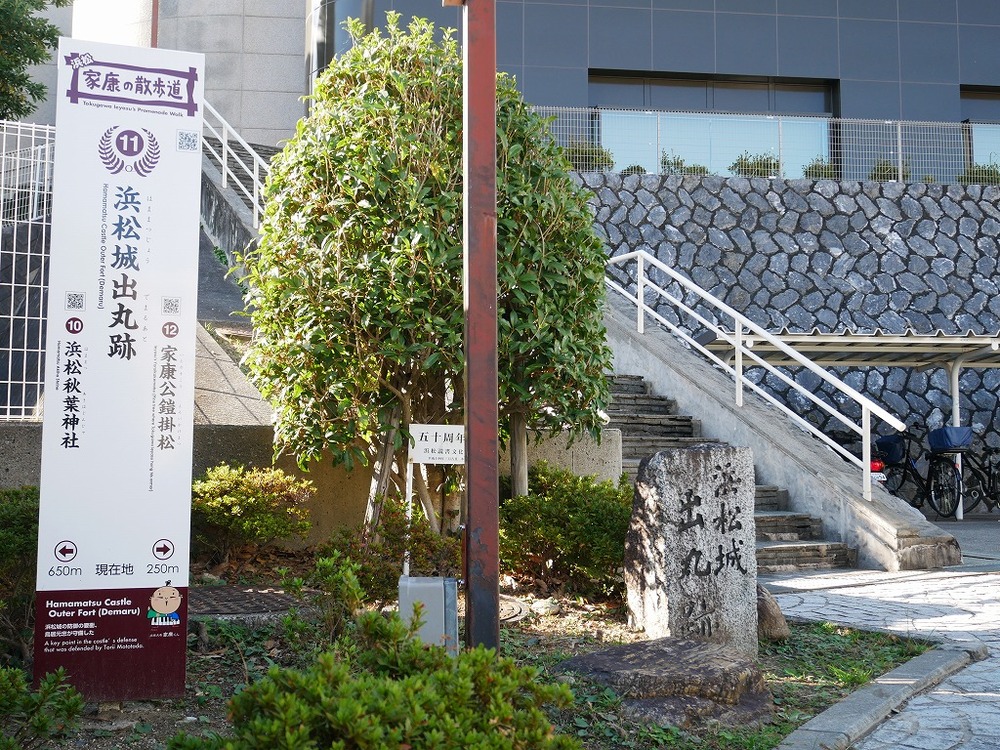
The stone monument marking the ruins of Hamamatsu Castle is located at the bottom of the stairs leading to the library entrance.
This area is where when Lord Ieyasu built Hamamatsu Castle, a demaru was built that jutted out as a defensive facility on the south side. The “Torii Kuruwa” written in Lord Ieyasu’s biography “Butoku Hennen Shusei” is said to be this Demaru.
Once you’ve come this far, all that’s left is the 12th point, Ieyasu Yoroikakematsu, which faces the road a little south of Hamamatsu Castle. It is approximately 250 meters from the ruins of Hamamatsu Castle Demaru to Ieyasu Yoroikakematsu, a 3-minute walk. Just a little.
That’s what I’d like to say, but I was curious about the estimated site of Torii Mototada’s mansion on the map in the leaflet, so I decided to stop by here.
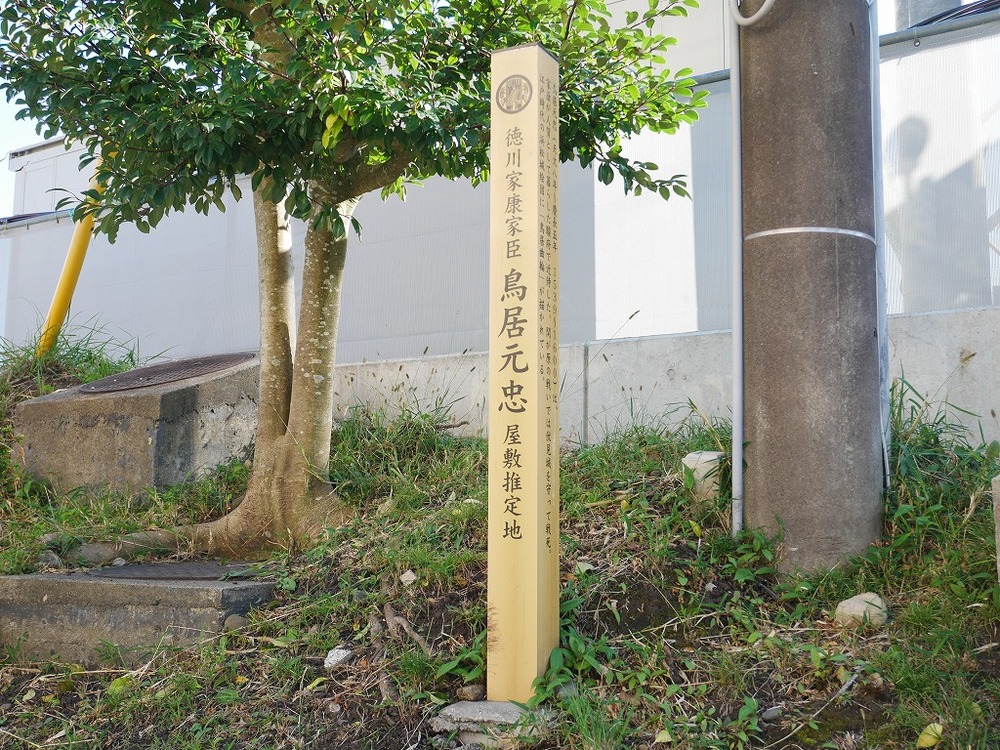
This monument is located at the west end of the library grounds, up the stairs behind the stone monument at the Hamamatsu Castle Demaru ruins.
Yes, the torii of Torii Kuruwa refers to Mototada Torii, a senior retainer of Lord Ieyasu who was known as the “model of the Mikawa samurai”. He is thought to have been guarding Demaru during Lord Ieyasu’s stay in Hamamatsu Castle, and this area appears to have been the site of his mansion.
The area near the stone monument of Hamamatsu Castle’s Demaru ruins is the remains of Demaru’s moat, and is approximately 20 meters above sea level. Demaru was about 7 to 8 meters higher than there, and was located where the library now stands.
It’s fun to imagine what Demaru would have been like.
12th point: Lord Ieyasu's Yoroi (armor) Kakematsu

It is about 180 meters from the estimated site of Torii Mototada’s residence to Ieyasu Yoroikakematsu, which is about a 3-minute walk. Go down the slope towards Hamamatsu Castle and turn right at the end.
That was in 1572 (Genki 3). In the battle at Mikatagahara, Lord Ieyasu suffered a crushing defeat against the Takeda army. The Ieyasu armored pine is said to be the pine on which Lord Ieyasu hung his armor after fleeing back to Hamamatsu Castle.
However, this pine tree is the third generation. Moreover, it seems that the first pine tree was not located here, but to the south, in a place that is now a road.
This is the end of the second half of the “Castle Inner/Castle Route” of “Ieyasu’s Promenade”. Thank you for your hard work.
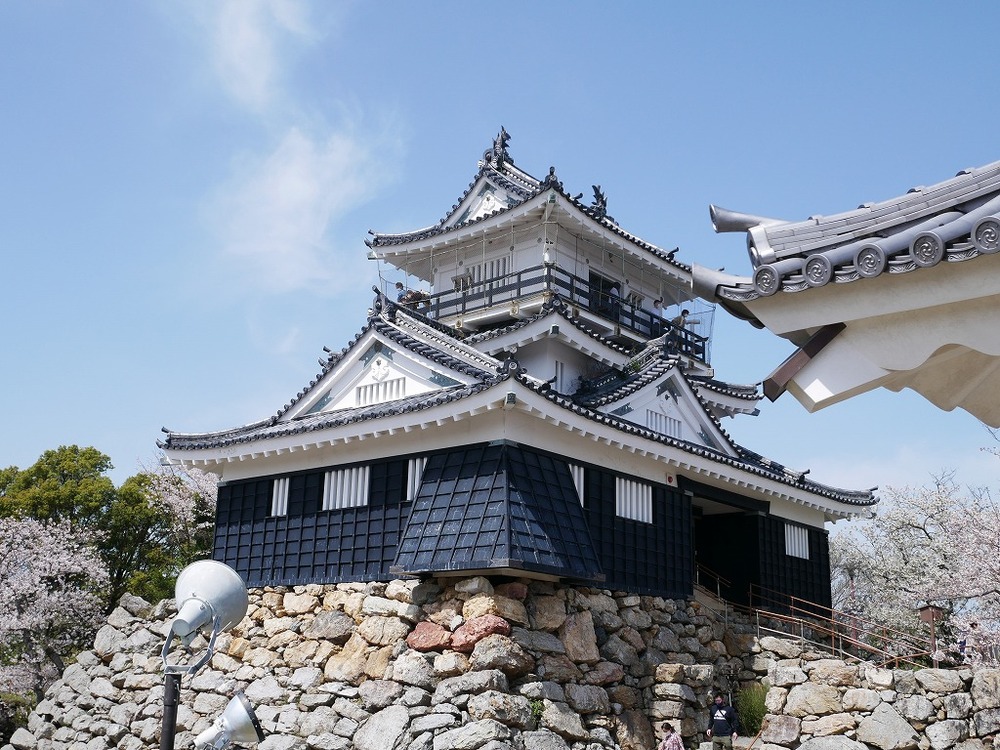
During the 17 years that Lord Tokugawa Ieyasu spent in Hamamatsu, he was faced with a series of questions, “What should I do?” The battles of Mikatagahara, Nagashino and Shitarahara. The Honnoji Incident also happened during the Hamamatsu castle period.
It was during this time in Hamamatsu that he lost his legal wife Tsukiyama Gozen and his eldest son Nobuyasu.
I don’t know how my opponent will react.
Is this judgment correct?
What should I do?
What should we do? What should we do? What to do! ?
Without this “What should we do!?” response in Hamamatsu, the unification of Japan might not have been possible. Why not take a walk along the “Ieyasu Promenade” while remembering Lord Ieyasu?
Hamamatsu Castle Park official website (external link)
「https://www.entetsuassist-dms.com/hamamatsu-jyo/」
“Ieyasu’s Promenade” web version leaflet (opens in a new window)▼
Ieyasu’s promenade leaflet (web version)
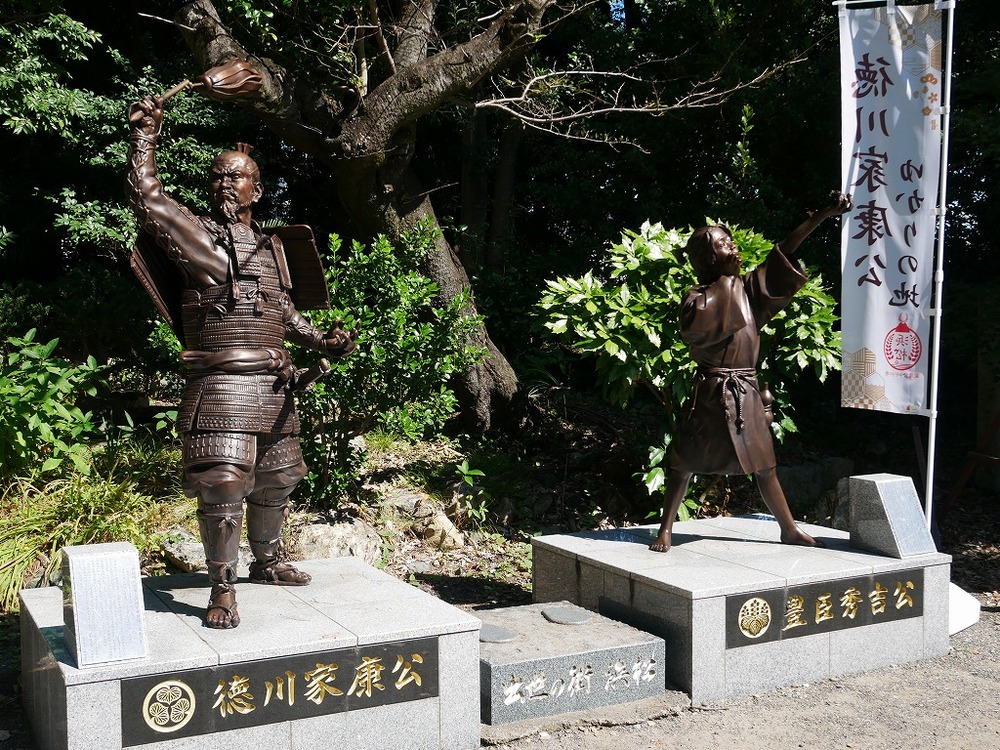
Walking in the Footsteps of Ieyasu: Exploring Historic Sites Around Hamamatsu Castle (Part 1)

